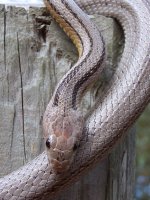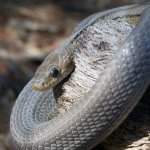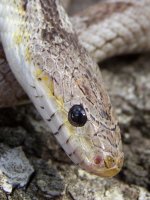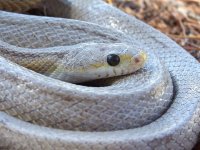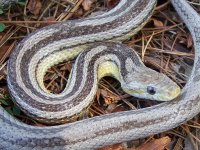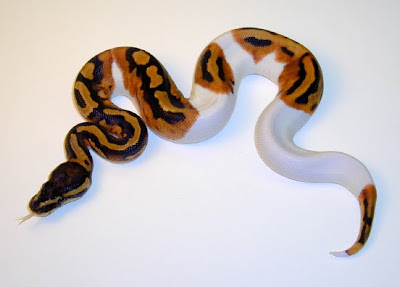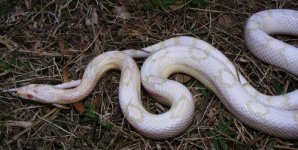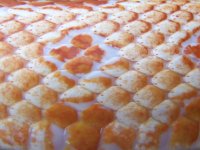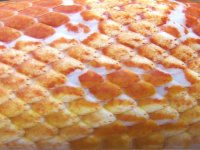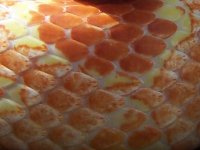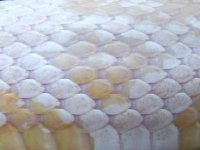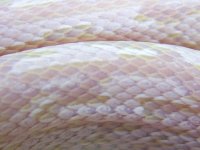dave partington
Crazy Dave
Just MO, but I would venture to say she's a got some yellow rat in her. Look at the head, it screams yellow rat to me.
If you look at a yellow ratsnake, a trans peco ratsnake, a motley/motley stripe caramel, or a striped butter, then there are many similarities between them all. The arrangement of head scales and a few other discernible attributes can be looked for, so closer inspection often reveals truths which do not show up in fuzzy little pictures. While there seems to be a trend towards screaming "HYBIRD!!!" at anything new or unfamiliar, it often is unfounded, though it's fun to watch.
I've also noticed how the cornsnake community seems to have drifted away from oldschool definitions
regarding pattern, and in some instances, color, as well.
It used to be that a snake, to be considered stripe, had to be 90% or more covered with a stripe. The same applied to the Motley/stripes. and to Motleys. If it had less stripe then it was considered a het.
Then along came Tesseras (out of an okeeXmotley project, and also Pieds.
And with them came the terms "high expression", Low Expression", and so forth.
I see many Tesseras with broken up central dorsal stripe; some do not really look like the original Tesseras which KJ, Don, & Graham originally worked with. But they are still marketed as Tessera, or referred to as 'Low Expression'.
I know the train of thought that anything that hatches in a Tessera clutch, that has the slightest look of a Tess anywhere on its body, is considered a Tessera for all intensive retail purposes.
However, because they came out of Motley/Stripe genetic background, why not call an incomplete dorsally striped Tess a Het Tess?
I started a thread asking about 'Superform Tessera', it got like 3 replies. From what I gather on that, if a low expression tessera is bred to a low expression tessera, all of the tesseras that hatch out are considered Superform Tesseras, regardless of what they look like.
Would it not (perhaps?) be better to consider Tesseras which most closely resemble the original reverse trio' pattern to be considered Superform"?
Can the breeding of two Tesseras with messy patterns produce a Tessera with clean pristine original crisp pattern?
With Pied came High Expression, Low Expression, & so forth.
And then there's a lot of snakes which contain Hypo, but it seems that there is a lot of Ghost stuff around which has, from what I've seen, way too much black to really fit into the definition of Hypo. I mean, either it is, or it isn't. I feel it is irresponsible to try to sell something for more than it is.
I have snakes with the broken up stripes, some of them have gaps in the stripe, others have that butterfly pattern thing on their backs. I'm not sure they are stripe, that is, the pattern does not cover 90% of their body. Some people call it 'vanishing stripe' or come up with other names for space junk. I really do not think of it as "vanishing" at all. The pattern stays the same for the lifespan of the individual snake. However, some of the Vanishing Stripe snakes do indeed have pattern which fades, mutes, and disappears over the course of the snakes first few years of life; the pattern does truly vanish.
Feedback please.
dp

